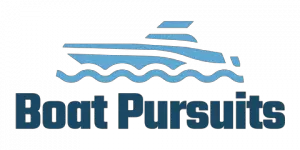

What Is the Difference Between Catamaran and Speed Boat? (EXPLAINED)

Are you looking for a boat that is stable, fuel efficient, and fast? Do you want to cruise in a boat that can handle rough waters and offers great maneuverability? If so, then you may be considering between a catamaran and a speedboat.
In this article, we’ll explore the differences between these two types of boats, covering their size and stability, fuel efficiency, performance on rough waters, speed, maneuverability, and intended use.
By the end, you’ll be able to make an informed decision on which boat is best for you.
So, let’s get started!
Table of Contents
Short Answer
Catamarans are multi-hulled boats, usually with two parallel hulls of equal size that are connected by a frame.
They are typically wider than speed boats and provide more stability due to their design.
Speed boats, on the other hand, are usually single-hulled boats that are designed to be fast and agile.
They are typically narrower than catamarans and are more suitable for navigating tight waterways.
Additionally, speed boats are usually more powerful and can reach higher speeds than catamarans.
Types of Boats
When it comes to boats, there are two main types to consider: Catamarans and Speedboats. Both offer a great way to enjoy the water, but there are some key differences between them.
Catamarans are typically larger and wider than speedboats, resulting in more stability and space.
Generally, Catamarans can accommodate more people and offer more amenities than speedboats.
They are also more fuel-efficient and can handle rougher waters better than speedboats.
Speedboats, on the other hand, are designed for speed.
They are built to be lightweight and streamlined, resulting in faster speeds and greater maneuverability.
They are ideal for racing and fishing in calm waters, but not as suitable for rough conditions.
Speedboats also tend to be more affordable than catamarans.
Ultimately, the type of boat one chooses depends on the intended use and personal preference.
If youre looking for a leisurely ride, a catamaran may be the best choice.
However, if youre looking for speed and agility, a speedboat is the way to go.
Its important to consider the size of the boat, the type of waters it will be cruising in, and the budget when making a decision.
Size & Stability of Catamaran vs. Speedboat

When it comes to size and stability, there are a few key differences between catamarans and speedboats.
Catamarans are typically larger and wider than speedboats, which offers more stability on the water.
This is due to the two hulls that make up the catamarans design, which allows for more support and stability.
This is especially beneficial for activities such as fishing, since it reduces the rocking motion that can be experienced in a single-hulled vessel.
In addition, catamarans are more fuel-efficient than speedboats due to their increased size.
This is especially advantageous for those who are looking to spend more time on the water without having to worry about needing to refuel frequently.
Their larger size also makes them more capable of handling rough waters, and they are less likely to be affected by high waves.
Speedboats, on the other hand, are faster and more maneuverable, making them ideal for activities such as racing and fishing in calm waters.
They are also more lightweight, allowing them to be more easily transported and stored.
However, their smaller size and single hull design make them more susceptible to the elements, and they are not as fuel-efficient as catamarans.
Those looking for stability and fuel efficiency may opt for a catamaran, while those wanting speed and maneuverability may choose a speedboat.
Fuel Efficiency of Catamaran vs. Speedboat
When it comes to fuel efficiency, catamarans have the upper hand over speedboats.
Catamarans are typically larger and wider, resulting in more stability and space.
This allows them to utilize their fuel more efficiently, as they can make longer trips without having to refuel.
This makes them ideal for long-distance cruising, as they can go farther with the same amount of fuel.
On the other hand, speedboats are smaller and narrower, making them more fuel-inefficient.
They require more fuel to move the same distance as a catamaran, making them less ideal for long-distance trips.
However, this fuel inefficiency is offset by their higher speeds and maneuverability, making them ideal for racing and fishing in calm waters.
Ultimately, the type of boat one chooses should depend on their intended use and personal preference.
Catamaran vs. Speedboat on Rough Waters

When it comes to recreational activities on the water, many people wonder: what is the difference between a catamaran and a speedboat? While both offer great ways to enjoy the water, they do differ in some key ways.
When it comes to rough waters, catamarans have the edge.
Catamarans are larger and wider than speedboats and provide more stability, making them better suited for rougher waters.
The additional space also allows for more people or cargo to be carried.
And since they are more efficient when it comes to fuel consumption, catamarans can handle more challenging waters without having to refuel as often.
Speedboats, on the other hand, are faster and more maneuverable.
This makes them ideal for racing or fishing in calm waters.
However, when it comes to rougher waters, they dont offer the same stability as catamarans.
The smaller size of speedboats also means that they consume more fuel when compared to catamarans.
Those looking for a more stable ride on rougher waters should opt for a catamaran, while those looking for a faster ride on calmer waters can opt for a speedboat.
Speed of Catamaran vs. Speedboat
When it comes to speed, there is a clear difference between catamarans and speedboats.
Speedboats are designed to be fast and maneuverable, so they are the ideal choice for those who want to race or enjoy water sports.
Catamarans, on the other hand, are designed to be stable and fuel-efficient, so they are better suited for longer journeys and trips in rougher waters.
Generally speaking, speedboats are faster than catamarans.
Speedboats typically have single or dual engines and can reach speeds of up to 70 mph, while catamarans are limited to around 20 mph.
However, the speed of a catamaran can be increased by adding additional engines, which will increase the speed up to 50 mph.
Speedboats also have a higher top speed than catamarans because their design allows them to be more aerodynamic.
Speedboats have a V-shaped hull that helps them cut through the water quickly, while catamarans have a flat-bottomed hull that is not as efficient in the water.
The speed of a catamaran is not the only factor to consider.
Catamarans are more stable than speedboats because of their wider beam and two hulls.
This makes them better suited for trips in rougher waters, as they can handle choppy conditions better than speedboats.
Additionally, catamarans tend to be more fuel-efficient, so they are better for longer journeys.
Ultimately, the type of boat one chooses depends on their intended use and personal preference.
Those who are looking for speed and maneuverability would be best served by a speedboat, while those who are looking for stability and fuel-efficiency would be better off with a catamaran.
Maneuverability of Catamaran vs. Speedboat

When choosing between a catamaran and a speedboat, one of the most important factors to consider is maneuverability.
Both boats offer great ways to enjoy the water, but they differ in how well they handle.
Catamarans, due to their wide and stable design, are not as maneuverable as speedboats.
This can make it difficult to maneuver in tight spaces, such as shallow rivers or marinas.
Speedboats, on the other hand, are designed to be more nimble and responsive, making them ideal for activities like racing and fishing in calmer waters.
They are also better suited for towing skiers and wakeboarders due to their higher speeds.
In terms of speed, speedboats are clearly the better option.
They are designed to be as fast as possible, with many models reaching speeds of up to 70 miles per hour.
Catamarans, on the other hand, are designed for stability and comfort, so they tend to be slower and less powerful than speedboats.
However, catamarans are more fuel efficient than speedboats, which means they cost less to operate over time.
Those looking for a fast, responsive vessel for racing and fishing in calmer waters may prefer a speedboat, while those looking for a larger vessel with more room and stability might choose a catamaran.
Those looking for a combination of speed and stability might choose a hybrid vessel, such as a center console or deck boat.
Intended Use and Personal Preference
When it comes to deciding between a catamaran and speedboat, the intended use and personal preference are two important factors to consider.
Catamarans are typically larger and wider than speedboats, making them better suited for activities such as fishing and lounging.
They also offer more stability and space, making them an ideal choice for larger groups.
Additionally, catamarans are more fuel-efficient and can handle rougher waters better than speedboats due to their increased stability.
Speedboats, on the other hand, are faster and more maneuverable than catamarans, making them perfect for racing and fishing in calm waters.
Speedboats are also lighter and easier to transport, making them a great option for those who dont have a lot of storage space.
If youre looking for a vessel that offers more stability and space, then a catamaran may be the right choice.
If youre looking for a boat that is faster and more maneuverable, then a speedboat may be the better option.
Final Thoughts
In conclusion, catamarans and speedboats are two popular recreational vessels, but each have their own advantages and disadvantages.
Catamarans are larger and wider, making them more stable and offering more space.
They are also more fuel-efficient and handle rough waters better than speedboats.
Speedboats, on the other hand, are faster and more maneuverable, making them ideal for racing and fishing in calm waters.
Now that you know the differences between catamarans and speedboats, you can make an informed decision on which one is best for you.
James Frami
At the age of 15, he and four other friends from his neighborhood constructed their first boat. He has been sailing for almost 30 years and has a wealth of knowledge that he wants to share with others.
Recent Posts
When Was Banana Boat Song Released? (HISTORICAL INSIGHTS)
The "Banana Boat Song" was released in 1956 by Harry Belafonte. This calypso-style song, also known as "Day-O," became a huge hit and remains popular to this day for its catchy tune and upbeat...
How to Make Banana Boat Smoothie King? (DELICIOUS RECIPE REVEALED)
To make a Banana Boat Smoothie King smoothie at home, start by gathering the ingredients: a ripe banana, peanut butter, chocolate protein powder, almond milk, and ice. Blend the banana, a scoop of...
- Adventure Series
- Explorer Series
- Defender 22
Power Catamarans
- Yachts for Charter
- List Your Yachts for Charter
- Pre-Owned Listings
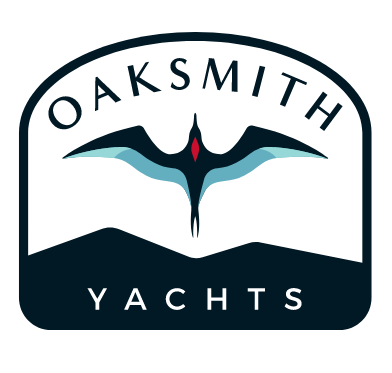
Catamaran vs. Monohull: Which Hull Design is Safer? Advantages, Pros & Cons of Power and Sailing Catamarans
When it comes to choosing the right boat, especially for open waters, the debate between catamarans and monohulls is always top of mind. Each hull design has its unique characteristics, offering different advantages, safety features, and experiences on the water. In this guide, we’ll explore the safety aspects of catamarans compared to monohulls, the advantages of catamaran hull designs, and the pros and cons of both power and sailing catamarans.
1. Catamaran vs. Monohull: Understanding the Basics
A catamaran has two parallel hulls joined by a deck, while a monohull has a single hull. The fundamental difference in hull structure greatly affects the stability, speed, and handling of each type of vessel.
Monohulls are designed with a V-shaped or rounded hull and are typically more narrow. Their stability comes from a deep keel and the boat's weight, allowing it to stay upright even in rougher waters. However, this design requires the boat to heel, or lean, especially when sailing.
Catamarans , with two hulls, have a wider base and sit more level on the water. They don’t have a deep keel, relying on the beam (width) and buoyancy in both hulls for stability, which results in less heeling and a more comfortable ride.
2. Is a Catamaran Safer than a Monohull?
The question of safety is critical, especially for boaters venturing into open waters or rough conditions. Both catamarans and monohulls have safety benefits, but catamarans hold some advantages in certain situations.
Stability : Catamarans have a wider beam, making them more stable than monohulls. This stability makes them less likely to capsize or roll over, which can be especially reassuring in turbulent waters.
Heeling : Monohulls tend to heel significantly under sail, which can be a bit unnerving for some passengers. Catamarans remain more level, even in strong winds. The reduced heeling in catamarans generally makes for a safer and more comfortable ride.
Capsizing Risks : Catamarans are less prone to rolling due to the stability of their dual hulls, but they are harder to recover if they do capsize, as they don’t self-right like a monohull. However, they are less likely to flip in the first place, so the trade-off might be worth it for many boaters.
Shallow Draft : Catamarans have a shallow draft due to their lack of a deep keel, allowing them to navigate in shallower waters. This can be a safety advantage in areas with reefs or shallow coastlines.
3. Advantages of Catamaran Hull Design
The hull design of a catamaran brings multiple advantages beyond stability:
Fuel Efficiency : Power catamarans benefit from reduced water resistance, which means they’re often more fuel-efficient than comparable monohulls, offering longer range and lower fuel costs.
Speed : Catamarans, especially power catamarans, are generally faster due to reduced drag. With two hulls slicing through the water, they can reach higher speeds with less effort.
Deck Space and Comfort : Catamarans boast significantly more deck space and interior volume than monohulls of the same length. This added room offers more living and lounging space, making them ideal for families or larger groups.
Reduced Wake : The hull design of a catamaran allows it to produce less wake, which not only contributes to fuel efficiency but also minimizes environmental impact.
4. Pros and Cons of Power and Sailing Catamarans
- Speed and Efficiency : Power catamarans are efficient and tend to be faster than sailing catamarans, making them great for long trips.
- Easy Maneuverability : Equipped with dual engines, power catamarans have excellent maneuverability and can turn and dock with ease.
- Reduced Noise : Without sails, there’s less flapping and wind noise, resulting in a quieter experience.
- Fuel Costs : While generally more fuel-efficient than monohulls, power catamarans do consume fuel, which can be a factor in long-distance cruising.
- Limited Range : Power catamarans still have a more limited range than sailing catamarans, as they rely on fuel reserves for long trips.
Sailing Catamarans
- No Fuel Costs for Sailing : Sailing catamarans use wind as their main power source, making them a great choice for extended voyages.
- Stability and Comfort : Sailing catamarans are well-suited for a steady, comfortable ride with less heeling.
- Eco-Friendly : Without the need for fuel, sailing catamarans offer a more environmentally friendly option.
- Slower Speeds : Compared to power catamarans, they are generally slower, especially in low-wind conditions.
- Skill Requirements : Operating a sailing catamaran requires some skill in handling sails and understanding wind patterns, which may not appeal to all boaters.
5. Choosing Between a Power and Sailing Catamaran
Your choice between a power and a sailing catamaran largely depends on your boating needs and experience. Power catamarans are favored by those who prefer speed, convenience, and don’t mind refueling. Sailing catamarans, on the other hand, are ideal for adventurers who enjoy a quieter, fuel-free experience and don’t mind the slower pace of wind-powered travel.
Final Thoughts
Choosing between a catamaran and a monohull boils down to your priorities on the water. Catamarans offer excellent stability, space, and fuel efficiency, making them a great choice for those who prioritize comfort and a smoother ride. Monohulls, with their self-righting capabilities and traditional design, remain a popular choice for many sailors, especially those who prefer a more hands-on, classic sailing experience. Whether you go for a power or sailing catamaran, understanding the pros and cons of each type will help you make the best choice for your maritime adventures.

Ben Oaksmith
Related articles, advantages and disadvantages of power catamarans, silent yachts s62: awarded “most efficient yacht” at the 2024 world yachts trophies—the future of power catamarans is now, advantages of aluminum hulls in the pacific northwest (pnw): the backbone of arksen and jasper marine boats.

How Fast Do Catamarans Go? 5 Examples (With Pictures)
A catamaran is generally more balanced on the water and can be faster than a multi-hull vessel.
Unless you compare them to foiling monohulls like the new America’s Cup boats that sail at over 50 knots, they are not recreational vessels.
In this article, we will look at how fast each type of catamaran will go.
Table of Contents
Here are the numbers before we dive into the details:
| Sport Catamarans | 30 knots |
| Cruising Catamarans | 15 knots |
| Racing Catamarans | 45 knots |
| Power Cruising Catamarans | 70 knots |
| Swath Catamarans | 30 knots |
Average Speed For Sailing Catamarans
Catamarans can vary in size from 14 ft to over 100 ft. Catamarans can come in a wide variety of design types.
Sailing Catamarans have been attempting to make advancements over their mono-hulled counterparts.
These advancements include:
- Foils that assist with lifting the vessel out of the water.
- Stability advancements.
- Racers that can maintain their speed while out in the ocean.
3 Different Types of Sailing Catamarans:
1) sport catamarans.

One type of sailing catamaran is a sport catamaran, which is otherwise known as recreational. These are typically supposed to have a small crew and launch and land on beaches.
Sport catamarans do not normally have living quarters and are ideal for day trips. Resorts or other rental services often use these.
These can also be used for racing.
Sport vessels have been known to travel over 30 knots but can speed over 40 knots in the proper conditions.
2) Cruising Catamarans

Another type of sailing catamaran is a cruising catamaran. These often come with complete living accommodations, so they sacrifice speed over their sportier counterparts.
They can average between 9 and 10 knots, depending on the conditions. The top speed is typically around 15 knots.
It would be best if you were careful with catamarans that have living quarters. The more you weigh it down, the less speed you will have.
3) Racing Catamarans

The final type of sailing catamaran is an ocean racing catamaran.
These boats are large and can reach over 100 feet in length.
The top speed of this type of catamaran is around 45 knots.
Because of the prize money for entering these in races, much research goes into their advancement.
Average Speed Of Power Catamarans
Catamarans with power motors fill a different type of boating category.
These are commonly used when speed and smoothness are favored over space or capacity.
Because of their stability, catamarans are good vessels for combating seasickness as well as transportation. We have a separate article here with all you should know about catamarans and (how to overcome) seasickness .
On a commercial level, these can be used for ferries for both people and vehicles. They are used for short term travel, often to or from islands.
Like sailing catamarans, there are a few types of power catamarans.
1) Power Cruising Catamarans

Similar to sailing cruising catamarans, they also have power cruising catamarans. These also have living quarters and are stable while out on the water. The speed of these vessels highly depends on the motors equipped and the size of the boat itself.
Like passenger transport or ferries, catamarans have a high speed of about 40 to 70 miles per hour.
These are made to travel at great speeds to allow their commuters the shortest possible ride to their destination.
The military also utilizes power catamarans. They use power catamarans to transport military cargo. These ships are ideal because of their speed, holding capacity, and ability to venture into shallow ports.
2) Swath Catamarans

They also have small-waterplane-area twin-hull vessels. These are called SWATHs.
These differ from the average catamaran because they also have submarine-like hulls that stay completely under the water.
Due to the hulls being submerged, they are not normally affected by waves. These are used most often in the ocean as research vessels. They can also be used for certain types of yachts. Because of their stability, they are good vessels for furniture that will not require as much securing.
These often travel between 20 and 30 knots.
Some catamarans are designed for wave piercing. These are made to pierce through waves rather than sail over them, causing them to be faster. These can be used as passenger ferries, yachts, and military vessels as well.
3) Whitewater Catamarans

There are also recreational catamarans made for whitewater travel. These are sometimes called “cata-rafts.”
They are made using two inflatable hulls connected with a scaffold. These are lightweight and perfect for whitewater sports.
They are even able to be packed away in a backpack. They can take up to 20 minutes to assemble, including inflation.
They have high speeds on white water rivers and can be most compared to a canoe, kayak, whitewater raft, or other white water vessels.
Performance Characteristics Of Catamarans
Catamarans require four times the power to double their speed. A mono-hull vessel, however, would require eight times the power to double their speed.
This is because a Catamaran has less resistance in the water.
This is also good for conserving and using less energy.
Catamarans are also more stable in the water. This stability is effective at resisting heeling or capsizing. A multi-hull vessel would require four times the force to capsize as a similar-sized mono-hull vessel.
The general sailing in a catamaran is smoother and allows for activities that are not always possible on a mono-hull sailboat.
Are Catamarans Faster than Mono-Hull Vessels?
Because catamarans have less water resistance, they are generally faster than mono-hull vessels.
This is because their hulls are smaller, which means they have a smaller bow wave to fight.
A bow wave is a wave created by the displacement of water by the bow of a ship. After a certain speed, a boat has to start hauling itself over its own bow wave.
The larger hull a ship has, the larger its bow wave will be and the more power required to fight it.
Catamarans have two small and narrow hulls, so they do not have much of an issue with their bow wave. This is one reason they are usually faster than a similar-sized mono-hull vessel.
Catamarans can be between 20-30 percent faster than their monohull counterparts.
Issues with catamarans over mono-hulls are that they can take more time to turn.
How Is The Speed Measured?
Boats commonly measure speed using GPS tracking devices to measure distance traveled. Speed while sailing is measured in knots. A knot is one nautical mile per hour, which equals about 1.15 miles per hour.
How Fast Are Catamarans Compared To Other Boat Types?
- Sailing catamarans typically average about 10 knots.
- Pontoon boats average about 20 mph.
- A powerboat cruiser can average anywhere between 30 and 50 mph.
- Cigarette boats can even reach close to 90 mph in the proper conditions.
- Sailboats average between 6 and 12 mph depending on wind conditions. This includes mono-hull between 6 to 8 mph and catamarans and trimarans between 9 and 10mph
Two different factors can determine the speed of sailing ships:
1) The hull type as listed above.
Different hulls rest in the water more or less than other types. The less of the hull that is underwater, the faster it can go.
This is because the less of the hull in the water, the less drag created while sailing.
2) The length of the boat
The longer the boat, the faster it can go. Every boat has a maximum hull speed that cannot be exceeded unless the boat can plane on the water’s surface or be lifted on hydrofoils. For most boats, the longer the boat, the higher the maximum hull speed is.
Speed Vs. Comfort Considerations For Catamarans
If you are looking for a catamaran, you have a lot of options.
You can choose to prioritize speed or comfort.
After deciding to purchase a catamaran, the type of catamaran you should look at depends on where and what you are using it for.
You will want to make sure that you look at what type of water you will be traveling in, how many people you are traveling with on average, and what type of speed you hope to achieve.
One thing you will want to keep in mind before the purchase of a catamaran is storage. If you intend to store your boat in a marina, you are often charged for two slips due to the beam, or width, of a catamaran versus the standard mono-hull vessel.
Catamarans can be beneficial for those who get seasick because they offer a steadier ride and the ability to have more open air space. Because the living quarters are not inside the hull and under the water’s surface, you have more windows and visibility.
Both sailing and power catamarans are viable options. Also, sailing catamarans can come with back-up power engines for low winds or situations such as docking in a marina.
Catamarans that have twin engines can offer more control and precision than those on a mono-hull vessel. This is good for tight and busy areas or navigating marinas.
Overall, there are plenty of options for you, and they offer many benefits over their mono-hull counterparts.
Click to share...
Catamarans: A Complete Guide to Multihull Boats
Catamarans have been a part of sailing history for centuries and continue to be popular for their stability, spaciousness, and performance. Developed by various cultures around the world, the principles of catamaran design have evolved over time to become optimized for both pleasure cruising and racing. This complete guide will help you understand the essentials of catamarans, their unique characteristics, and how to choose the right one for your needs.

From the basic concepts of multihull design, performance, and handling, we will explore the advantages and benefits of a catamaran in terms of safety and comfort on board.
Along the way, we will discuss maintenance considerations, distinctive catamaran brands and models, and how a catamaran lifestyle can compare to more traditional sailing options .
Finally, we will provide learning resources and frequently asked questions tailored to both seasoned sailors and newcomers to the world of catamarans.
Key Takeaways
- Catamarans are known for their stability, spaciousness, and performance
- This guide covers aspects like design, handling, safety, and choosing the right catamaran
- Resources and frequently asked questions provide additional insights for potential catamaran owners
Understanding Catamarans
Design Characteristics
Catamarans are known for their unique design, which features two parallel hulls connected by a deck. This design provides several advantages over traditional monohull boats, such as stability and speed.
With their wide beam, catamarans have a reduced risk of capsizing and can access shallow waters due to their shallow drafts 1 .
One of the notable aspects of a catamaran is its twin hulls, which offer increased living space and comfort compared to a monohull. Additionally, catamarans are often favored by recreational and competitive sailors for their excellent maneuverability 2 .
The materials used for constructing catamarans range from wood to fiberglass, and even aluminum for high-performance vessels. Aluminum catamarans are known for their strength, lightweight structure, and resistance to corrosion 3 .
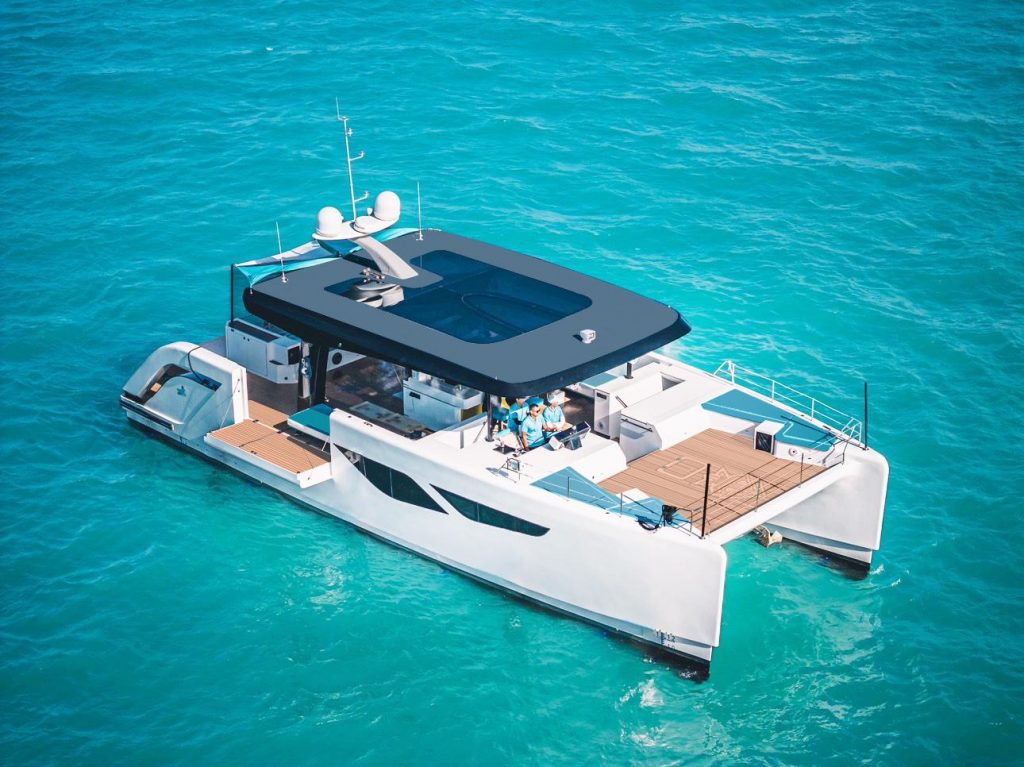
Hulls and Construction
The hulls in a catamaran are crucial to its stability and performance. These hulls help distribute the weight evenly across the water surface, minimizing drag and allowing for smoother sailing.
In general, the hulls can be categorized into two types:
- Symmetrical Hulls : The hull shape is similar on both sides, which enhances balance and stability in various sailing conditions.
- Asymmetrical Hulls : One side of the hull is designed differently than the other, which can be advantageous when sailing upwind.
The construction materials used in building catamaran hulls also play a vital role in the boat's performance and durability. Common materials include:
- Fiberglass : A popular choice due to its lightweight, strength, and ease of maintenance.
- Wood : Traditional material that offers a classic look, but requires more maintenance than fiberglass or aluminum.
- Aluminum : Lightweight and strong, aluminum is an excellent choice for high-performance catamarans 4 .
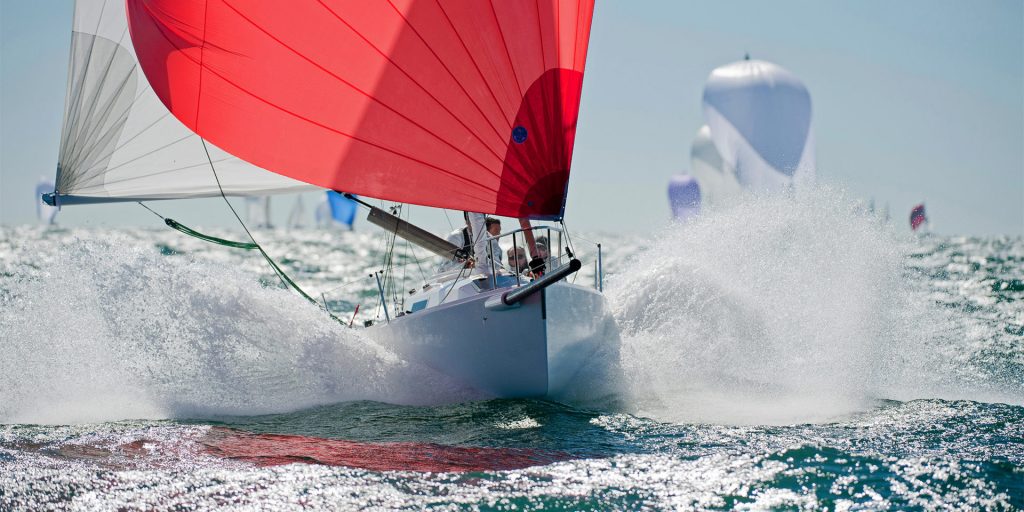
Multihulls vs Monohulls
There's often a debate between the benefits of multihull boats, such as catamarans or trimarans, and monohull boats. Here are some key differences between the two:
- Stability : Due to their wide beam and reduced heeling, catamarans offer improved stability compared to monohulls. This makes them an attractive option for those who want to avoid seasickness or feel more comfortable on the water 5 .
- Speed : Multihull boats are known for their speed, which results from their ability to minimize drag and maintain a level sail.
- Living Space : Catamarans and other multihulls generally have more living space, as both the hulls and the connecting deck can be utilized for accommodation and storage.
- Maneuverability : While monohulls are known for their agility and ability to point close to the wind, catamarans can still offer exceptional maneuverability when properly sailed 6 .
Performance and Handling
Speed and Efficiency
Power catamarans have gained popularity for offering a unique combination of speed, efficiency, and stability. Their dual-hull design allows for less water resistance, which directly translates to higher speeds and better fuel efficiency compared to traditional monohull boats.
In addition, the wide beam provided by the two hulls ensures a stable ride even at higher speeds. This makes power catamarans ideal for cruising, fishing, and watersports ( Boating Beast ).

Sailing Dynamics
When it comes to sailing catamarans , the performance is affected by factors such as keel, rudders, mast, and sails.
Their wide beam and dual-hull design provide inherent stability and reduced heeling effect, making them less likely to capsize compared to monohulls.
I should also note that catamarans have a shallow draft, which gives them the ability to access shallow waters that may be off-limits to other boats ( Navigating the Waters ).
In my experience, the lighter weight of a catamaran and its aerodynamic design can contribute to remarkable sailing performance under different wind conditions.
The larger sail area relative to hull weight allows them to harness more wind power, further enhancing their speed and agility on the water.
Maneuvering and Docking
Maneuvering and docking a power catamaran involves understanding its unique handling characteristics.
The presence of two engines in separate hulls allows for more precise control in confined spaces such as marinas.
The maneuverability of these boats is typically improved by the use of dual rudders that are located close to each powered hull for efficient steering ( BoatUS ).
When docking under power, I find it helpful to carefully assess the wind and current conditions beforehand.
This is because catamarans can be more sensitive to windage due to their larger surface area above the waterline.
By understanding how these forces may affect the boat, I can make adjustments to my approach and successfully dock the catamaran without any incidents.
Safety and Comfort on Board
Safety Features
Safety is a top priority when sailing any type of vessel, including catamarans. A well-built catamaran offers several features aimed at ensuring the safety of those onboard.
First, catamarans have inherent stability due to their wide beam and twin hull design . This makes them less prone to capsizing than monohull boats. This stability allows me to confidently navigate various water conditions .
In addition to stability, catamarans are designed with positive buoyancy, making them almost unsinkable . Of course, safety equipment such as lifejackets, flares, and first aid kits should always be onboard and well-maintained.
Furthermore, you should also stay updated on weather conditions, avoid sailing in high-risk areas, and learn your boat's safe sail limits.
Living Spaces and Comfort
When it comes to living spaces, I value comfort and practicality as essential features for my time on the water. Catamarans offer a unique advantage in this regard, as their dual hulls create spacious living areas.
Most catamarans are designed with separate cabins in each hull, allowing for privacy and comfort when sleeping. Additionally, these boats typically feature shallow drafts , which means I can access shallow waters and anchor close to shore.
The main living area, or salon, is situated on the bridge deck between the hulls. It usually includes a seating area, a dining table, and a galley (kitchen). Large windows provide ample natural light and panoramic views, making the space feel open and bright. Some catamarans even have the option for an additional living area on the upper deck where you can enjoy the sun and breeze.
One aspect of catamaran living I truly appreciate is the ample storage available. Each cabin typically has built-in storage spaces for clothes, gear, and personal items. There are also designated areas for equipment such as spare sails, tools, and water toys. This makes it easy for me to keep my belongings organized and make the most of my time on the water.
Maintaining a Catamaran
Routine Maintenance
In order to keep my catamaran in the best possible shape, I make sure to perform routine maintenance tasks. These tasks are essential to extend the life of the components and ensure smooth sailing:
- Cleaning : Regularly cleaning the deck, hulls, and sails prevents buildup of dirt, algae, and other debris that could affect performance.
- Inspection : Periodically inspecting my catamaran allows me to detect any potential issues before they become significant problems. I pay close attention to the rigging, sails, and lines on my boat.
- Lubrication : Keeping all moving parts lubricated is vital to prevent friction and wear on components such as winches and pulleys.
- Antifouling : Applying antifouling paint to the hulls of my catamaran helps prevent the growth of marine organisms that can damage the boat and reduce its speed. Make sure to do this at least once a year.
Dealing with Wear and Tear
Despite my best efforts to keep my catamaran well-maintained, wear and tear is inevitable. Here's how I deal with common issues that could arise from regular use:
- Repairs : When I notice signs of wear on sails, lines, or rigging components, I make it a priority to repair or replace them promptly. Neglecting these issues can lead to more significant problems and affect the boat's performance.
- Hull maintenance : If I find dents, scratches, or stiff rudders on my catamaran's hulls, I address them immediately. Repairing any damage not only ensures smooth sailing but also prevents further issues from developing.
- Sail care : Over time, my sails can become stretched, torn, or damaged due to exposure to sun, wind, and saltwater. Regularly inspecting them for signs of wear and making any necessary repairs or replacements helps maintain optimal performance.
- Rust and corrosion prevention : Since my catamaran is made of various metal components, I need to protect them from rust and corrosion. I routinely check for signs of corrosion and apply anti-corrosive treatments when needed.
Catamaran Brands and Models
High-Performance Models
In recent years, there has been a growing interest in high-performance catamarans. I have seen a variety of brands and models that have impressed me with their performance capabilities. One notable brand is Fountaine Pajot , which has a long history of producing a range of sailing catamarans and power catamarans. Some of their popular models include the Tanna 47 and the Bali 4.4 .
Another high-performance catamaran I've come across is the Leopard 40 . Known for their speed and exceptional handling in various conditions, the Leopard brand started with sailing catamarans and has since expanded to include power catamarans. Their models range from 40 to 53 feet long, offering both power and luxury for those looking for a thrilling experience on the water.
Cruising Catamarans
When it comes to cruising catamarans, the Lagoon brand is synonymous with luxury and comfort. With a range of sailing catamarans from 40 to 70 feet long, Lagoon offers spacious catamarans for extended bluewater cruising. Their 60- and 70-foot power catamarans are equally impressive, providing ample living space and smooth sailing experiences.
I've also found the Aquila 42 PC to be a remarkable cruising catamaran. With a focus on design and innovation, Aquila has produced catamarans perfect for exploring the open sea with friends and family. Their spacious, stable designs allow for a more enjoyable and serene journey, ensuring you arrive at your destination comfortably.
The Catamaran Lifestyle
Anchoring and Cruising
I find catamarans to be a fantastic choice for cruising and anchoring , which is a critical part of living the catamaran lifestyle . Catamarans have several advantages when it comes to anchoring and cruising, such as:
- Stability : Due to their wide beam and twin hulls, catamarans remain stable during anchoring, which reduces the risk of seasickness.
- Shallow draft : Thanks to their shallow draft , catamarans can anchor close to shore, enabling better access to protected coves and more beautiful beaches.
- Speed : Despite their large size for cruising vessels , catamarans are generally faster than monohulls. This is a result of their slim hulls and reduced water resistance.
When it comes to anchoring, catamarans can make use of their shallow draft to anchor in locations that other boats cannot. This allows for a greater range of cruising spots, which makes the overall experience much more enjoyable and unique.
Living on a Catamaran Full-time
For many catamaran enthusiasts, the dream of living full-time on a catamaran is entirely possible. While not without challenges, there are several factors that make living aboard a catamaran an enjoyable experience:
- Spacious living areas : Catamarans generally have more living area compared to monohulls, providing ample space for the whole crew.
- Privacy : The separate hulls allow for private cabins, ensuring that everyone on board has their space.
- Stability : As mentioned earlier, catamarans are stable vessels, making living on them more comfortable than monohulls.
Choosing Your Catamaran
Comparing Models and Features
When I start to look for the perfect catamaran, the first thing I focus on is comparing various models and features .
I determine the key factors that are essential for my needs, such as size, passenger comfort, and performance. By doing so, I can identify which catamaran models are most suitable for me.
For example, if I plan to sail with a large group, I would look for a catamaran that offers ample space both inside and out.
To help me with my comparisons, I usually create a table or list of the different models and their features:
| Model | Size | Comfort | Performance |
|---|---|---|---|
| A | 40ft | Spacious | High |
| B | 35ft | Average | Average |
| C | 45ft | Luxury | High |
This visual aid makes it easier for me to sort the options and prioritize my considerations, such as price, yacht type, and brand.
New vs. Second-Hand
Another critical aspect of choosing a catamaran is deciding between a new or second-hand boat.
Both options have their pros and cons, and ultimately it depends on my preferences and budget.
If I can afford a new catamaran, I get the advantage of the latest design , features, and technology. Plus, I typically receive better warranty coverage and support from the manufacturer.
However, new catamarans are more expensive and can have long wait times due to high demand.
On the other hand, purchasing a second-hand catamaran can save me a significant amount of money, and I might find a high-quality boat with low mileage or well-maintained by the previous owner.
However, this option carries more risks, as I need to be knowledgeable about potential maintenance issues and conduct a thorough inspection before purchase.
Learning Resources
Books and Manuals
When it comes to learning about catamarans, there are plenty of books and manuals available.
One of the highly recommended books is Multihull Voyaging by Thomas Firth Jones. This book provides a comprehensive understanding of multihulls, including catamarans, and is an essential guide for any beginner sailor.
Another great book to check out is Catamarans: The Complete Guide for Cruising Sailors by Gregor Tarjan.
With a foreword by Charles K. Chiodi, publisher of Multihulls Magazine, this book covers all aspects of cruising catamarans. It includes detailed information on design, construction, and maintenance, as well as tips and tricks for sailing a catamaran.
Here are a few more books that I find valuable:
- The Catamaran Book by Tim Bartlett, an excellent resource for both beginners and experienced sailors
- Catamaran Sailing: From Start to Finish by Phil Berman and Lenny Rudow, a comprehensive guide to both catamaran racing and cruising
Online Content and Photography
In addition to books, you can find plenty of online content and photography about catamarans.
Websites like Sailaway Blog and Boating Guide offer tips, techniques, and how-to articles for sailing catamarans.
Many of these sites also include stunning photography, showcasing these beautiful vessels in action.
For those who prefer Kindle or e-books, many of these resources are available in digital format.
This makes it easier for you to access them anytime, anywhere, allowing you to keep learning and improving your catamaran sailing skills.
To further enhance your knowledge, you can also join online forums and communities dedicated to catamarans.
These platforms provide invaluable advice and first-hand experiences shared by fellow sailors, as well as recommendations for additional learning resources.
Frequently Asked Questions
What factors should be considered when choosing a catamaran for full-time living?
When choosing a catamaran for full-time living, consider its space and layout , as it will become your home.
Look for a design with a comfortable living area , ample storage, and sufficient berths for the number of people living aboard.
Also, consider fuel efficiency , ease of maintenance, and the catamaran's cruising range .
Lastly, the overall cost of ownership , including insurance and mooring fees, should be considered.
How do catamarans perform in rough sea conditions?
In general, catamarans are known for their stability, which is primarily due to their wide beams. This makes them less prone to capsizing when compared to monohulls.
However, their performance in rough sea conditions will depend on the specific model and design of the catamaran. Some may perform better in certain conditions than others, so researching and selecting the right design is essential.
What are the key differences between sailing a catamaran and a monohull?
One of the main differences between catamarans and monohulls is stability.
Catamarans have a wider beam , which makes them more stable and minimizes the risk of capsizing.
They also have shallower drafts, which allow them to access more shallow waters compared to monohulls.
Additionally, catamarans often have larger living spaces, making them more comfortable and suitable for cruising and full-time living.
What are the advantages of catamarans for long-distance cruising?
Catamarans offer several advantages for long-distance cruising.
Their wide, stable design provides a comfortable ride and reduces the risk of seasickness.
They can also attain higher speeds due to their reduced drag and generally sail faster than monohulls on certain points of sail.
The shallow draft allows them to explore more coastal areas and anchor closer to shore. Lastly, their spacious interiors make them ideal for extended cruises and living aboard.
How does one assess the value of a used catamaran on the market?
Assessing the value of a used catamaran requires thorough research and inspection.
Start by comparing the age, model, and condition of the catamaran to similar listings on the market.
Take note of any upgrades or additions made to the boat, as these can affect the price.
It's essential to inspect the boat in person or hire a professional surveyor to ensure there are no hidden issues that could affect its value.
What essential features should be looked for in a catamaran intended for ocean voyages?
For ocean voyages, look for a catamaran with a strong, well-built hull designed to handle rough conditions.
Safety features such as liferafts, adequate flotation, and sturdy deck hardware are crucial.
A reliable engine and well-maintained rigging and sails are also essential.
In terms of living space, opt for a catamaran with a comfortable, spacious interior and ample storage.
Last but not least, good navigation and communication systems are necessary for long-distance ocean voyages.
Related Articles

Boating Tubes: Ultimate Guide for Thrilling Water Adventures
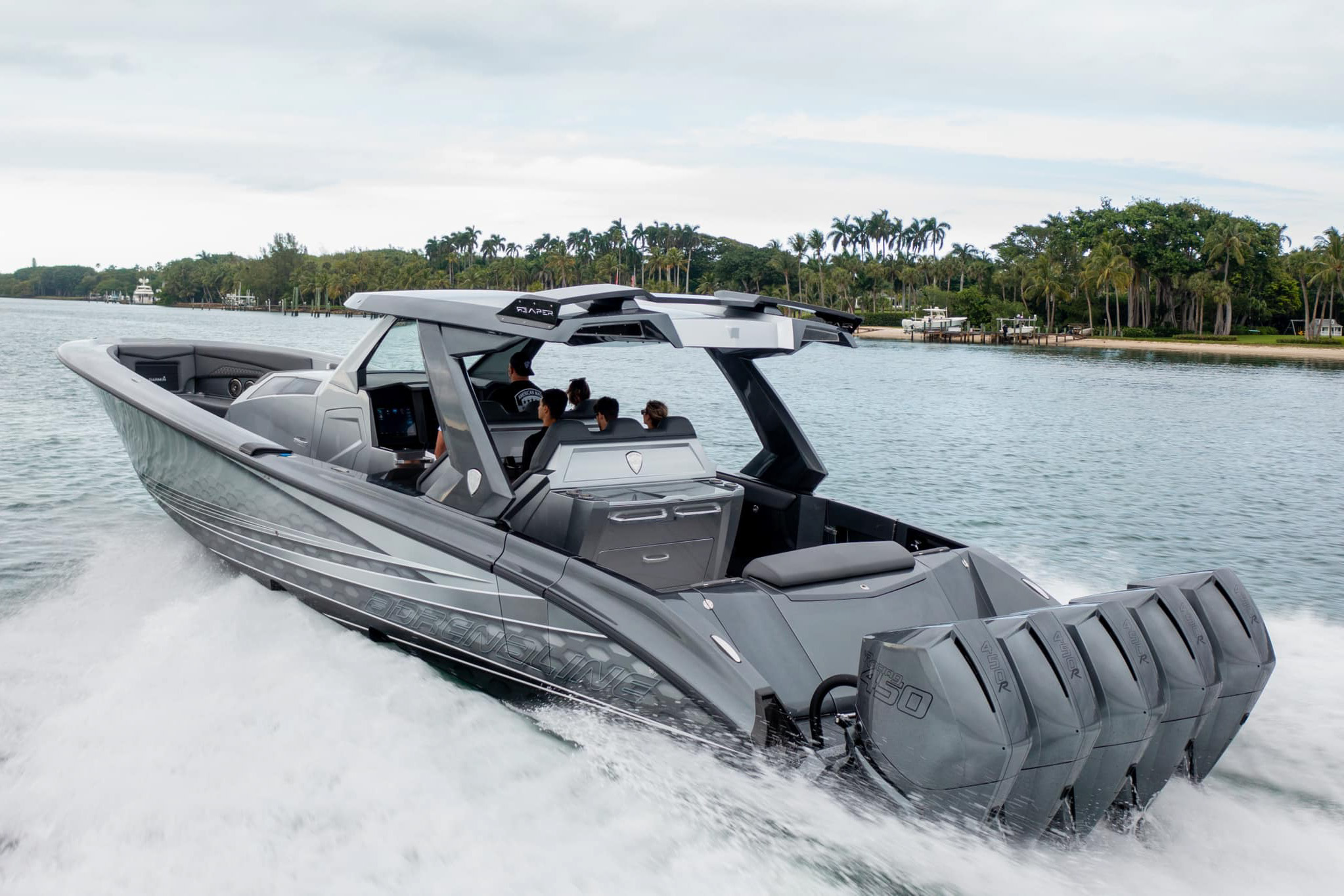
Adrenaline 47 Reaper: Unveiling the Ultimate Extreme Sports Experience

Boat Blue Book Value: Comprehensive Guide for Accurate Assessments

What Is Most Likely to Cause Someone to Fall Overboard? Key Risk Factors Explained
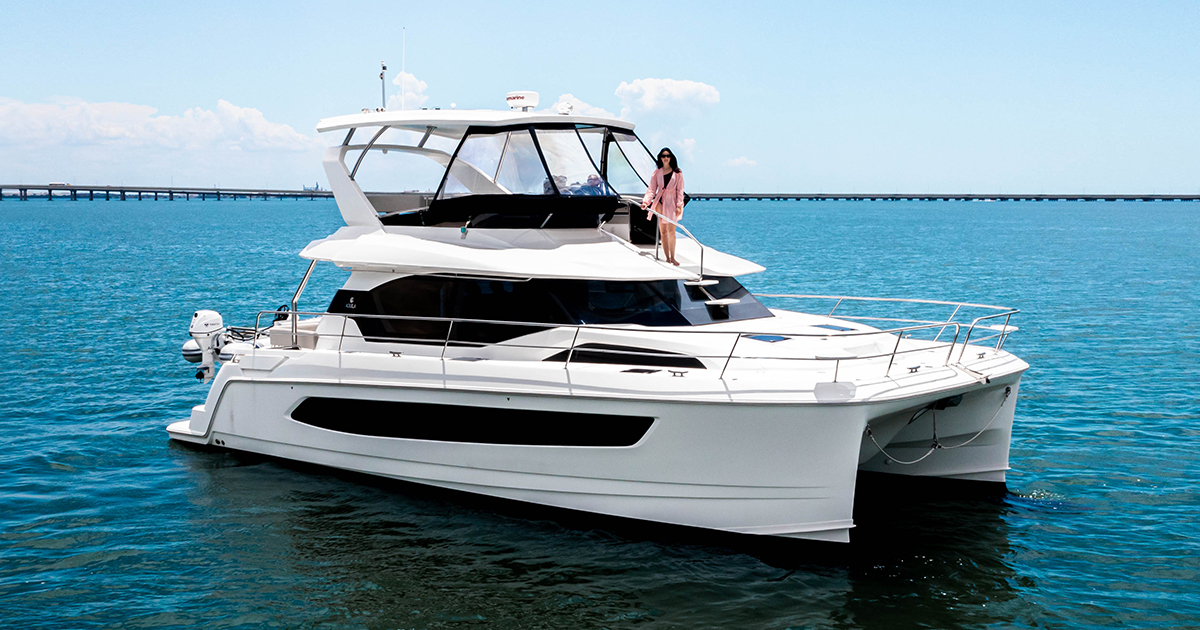
Aquila 44: Exploring the Luxury Power Catamaran Experience

Complete Guide to Chaparral Boats: Expert Insights and Essential Tips
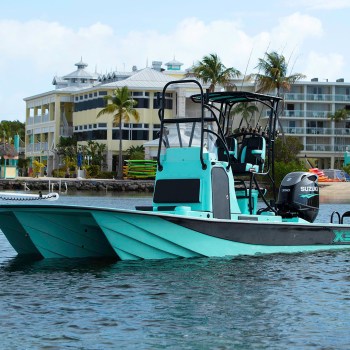
Tri Hull Boat Models: Specs, Prices, and Competitors Explained
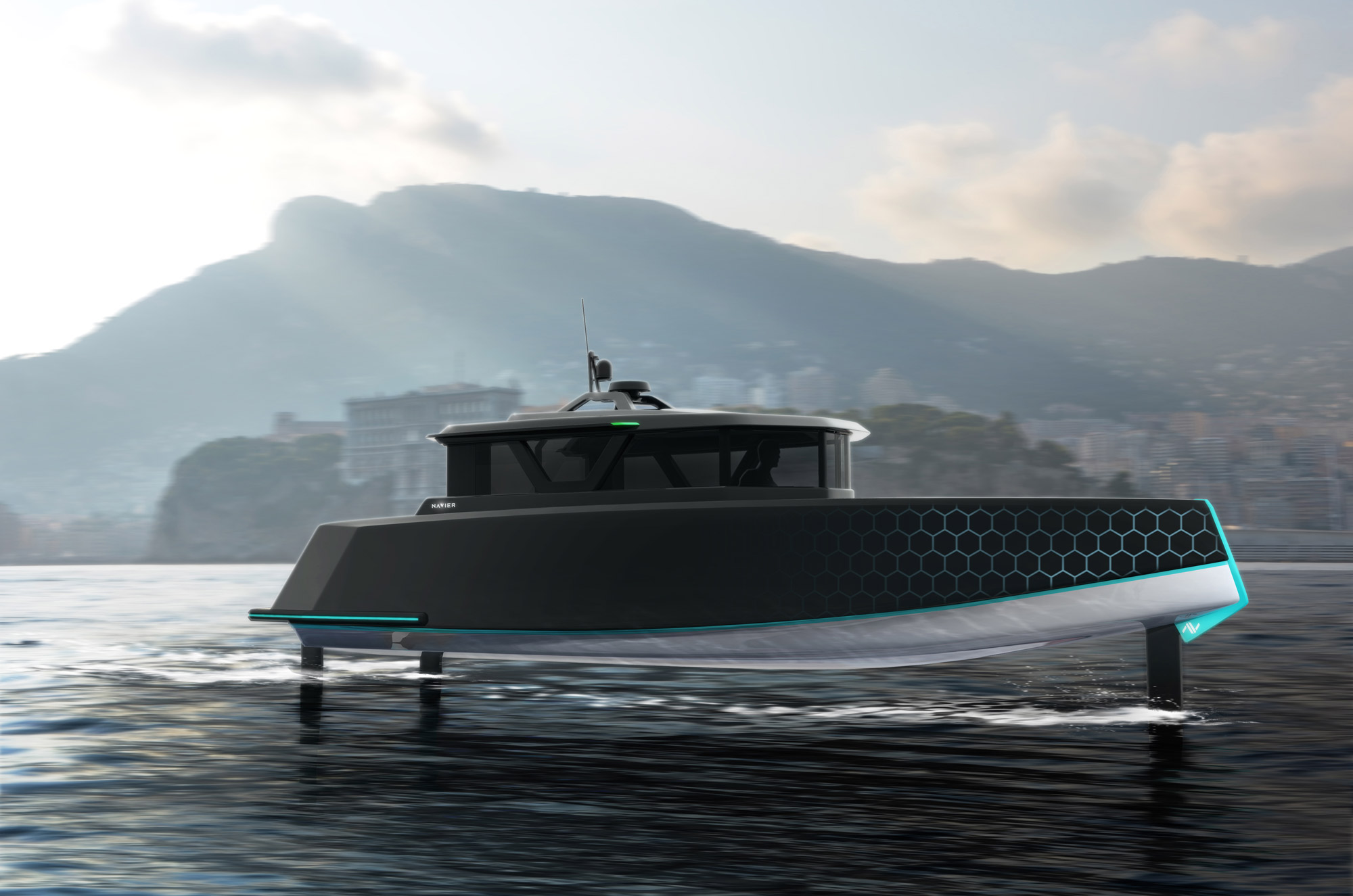
Navier Boat: Revolutionizing the Electric Maritime Industry

Catamaran Cruise or Speedboat Trip? Which One to Choose?
Exploring mauritius by boat: catamarans or speedboats.

Mauritius is a popular tourist destination for its stunning beaches, vibrant culture, and friendly people, and there are many exciting things to do in Mauritius. Crystal-clear waters surround Mauritius, home to a diverse range of marine life.
If you’re planning a trip to Mauritius, one of the most exciting things to do is explore the beautiful coastline by boat. Boat tours are the perfect way to discover this marine environment. Whether you want to snorkel, swim, or relax and enjoy the scenery, a boat tour in Mauritius is an unforgettable experience.
In this article, we’ll compare two of the most popular types of boats – catamarans and speedboats.
So, which one is better for you? Catamaran or speedboat
Catamarans are perfect for those who want to relax and enjoy the scenery while exploring the waters of Mauritius. These boats are spacious and comfortable, with plenty of room for lounging and enjoying the stunning views. They are also very stable, making them an excellent choice for families with children or those prone to seasickness.
Regarding cost, catamaran cruises in Mauritius are a bit more pricey but offer more amenities and comfort. If you’re interested in snorkeling or diving, catamaran cruises in Mauritius may be the better option as they offer more space for equipment and easier water access. If you want to try out watersports available on the Island of Ile aux Cerfs, the speedboat is the better choice.
Read more: How to choose the perfect catamaran cruise in Mauritius .
For a more adventurous experience, a speedboat may be the better option. It is perfect for thrill-seekers who want to explore the coastline, discover hidden coves and lagoons, and enjoy water sports such as water skiing and parasailing. Speedboats are a more affordable option and great for those on a budget.
Both offer unique experiences, and the choice ultimately depends on your preferences and interests. Mauritius catamaran cruises are a way to go if you want to relax and enjoy the views. But a speedboat is the better option if you’re looking for adventure and excitement.
See also: Mauritius boat tours that should not be missed.
Factors to consider when choosing between catamarans and speedboats
When choosing a boat tour in Mauritius, several factors must be considered. These include:
- Your budget : Boat tours can vary in price depending on the boat type, the tour length, and the activities included. Determine your budget before choosing a boat tour.
- Group size : Consider your group size when choosing a boat tour. Catamaran tours are ideal for larger groups, while speedboat tours are better suited for smaller groups.
Tips for a safe and enjoyable boat tour
- Remember your sunscreen and a hat to protect yourself from the sun.
- Follow the instructions of the boat tour operator.
- Bring your snorkel equipment.
- Be aware of the weather conditions and listen to any warnings from the boat tour operator.
In conclusion,
Whether you choose a catamaran tour or a speedboat tour, you will have the opportunity to see some of the best places in Mauritius. With some planning, you can enjoy a safe and enjoyable boat time in this stunning island paradise.
Our experienced drivers and knowledgeable guides at Taxi Service Mauritius are here to help you make the most of your time on the island. Whether you need airport transfers in Mauritius or want to book a guided sightseeing tour of the island’s top attractions, we’ve got you covered. Book your next adventure with Taxi Service Mauritius today. Visit our website now to learn more.
Which is better for a romantic boat tour in Mauritius - catamarans or speedboats?
Both catamarans and speedboats can offer a romantic and intimate experience in Mauritius. However, catamarans are generally more spacious and comfortable and offer a more relaxed and laid-back atmosphere. On the other hand, speedboats can be more thrilling and adventurous, which some couples may prefer.
What is a popular boat tour to take in Mauritius?
One of Mauritius's most popular boat tours is a catamaran cruise to Ile aux Cerfs. This stunning island off the east coast of Mauritius is known for its beautiful beaches and crystal-clear waters, making it the perfect spot for snorkeling, swimming, and exploring.
Should I choose a catamaran tour or a speedboat tour if I'm travelling with small kids?
A catamaran tour may be a better option if you're traveling with small kids. Catamarans are more stable than speedboats, which can help prevent seasickness and make for a smoother ride. Catamarans also typically offer a more leisurely experience, which can be better suited for young children.
Can I rent a private catamaran or speedboat for a tour in Mauritius?
Yes, you can rent a private catamaran or speedboat in Mauritius for a more exclusive and personalized experience. Contact us for availability and pricing.
What is the best time of year to go on a catamaran or speedboat tour in Mauritius?
The best time of year to go on a boat tour in Mauritius is during the dry season, which runs from May to November. The weather is generally sunny and dry during this time, and the waters are calm and clear.

IMAGES
VIDEO
COMMENTS
They are ideal for those who prioritize speed and ease of maneuverability, offering a smoother ride with more living space compared to monohull powerboats. Each type of …
The top of the industry and the boats that get the most attention are the offshore V bottoms and catamarans between 35 and 50 feet. That’s what it takes to tackle rough ocean …
Catamaran Speed Boats. Catamarans are the fastest high-performance boats available. There is no speed between a catamaran and a V-hull of the same length with identical- a catamaran will always be faster.
In this guide, we’ll explore the safety aspects of catamarans compared to monohulls, the advantages of catamaran hull designs, and the pros and cons of both power …
Like passenger transport or ferries, catamarans have a high speed of about 40 to 70 miles per hour. These are made to travel at great speeds to allow their commuters the shortest possible ride to their destination.
Speed: Despite their large size for cruising vessels, catamarans are generally faster than monohulls. This is a result of their slim hulls and reduced water resistance. When it comes to anchoring, catamarans can make …
Mauritius catamaran cruises are a way to go if you want to relax and enjoy the views. But a speedboat is the better option if you’re looking for adventure and excitement. See also: Mauritius boat tours that should not be …